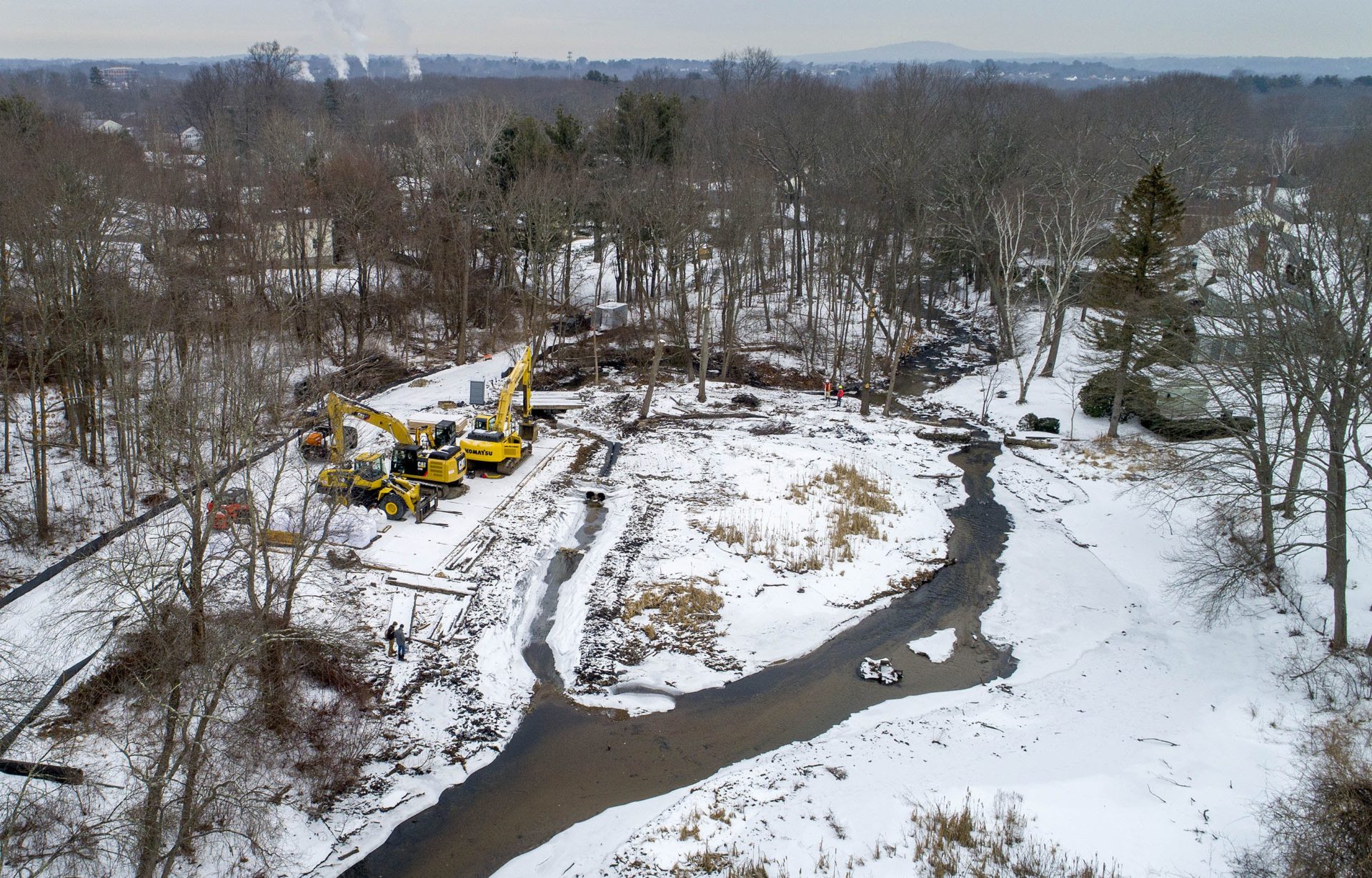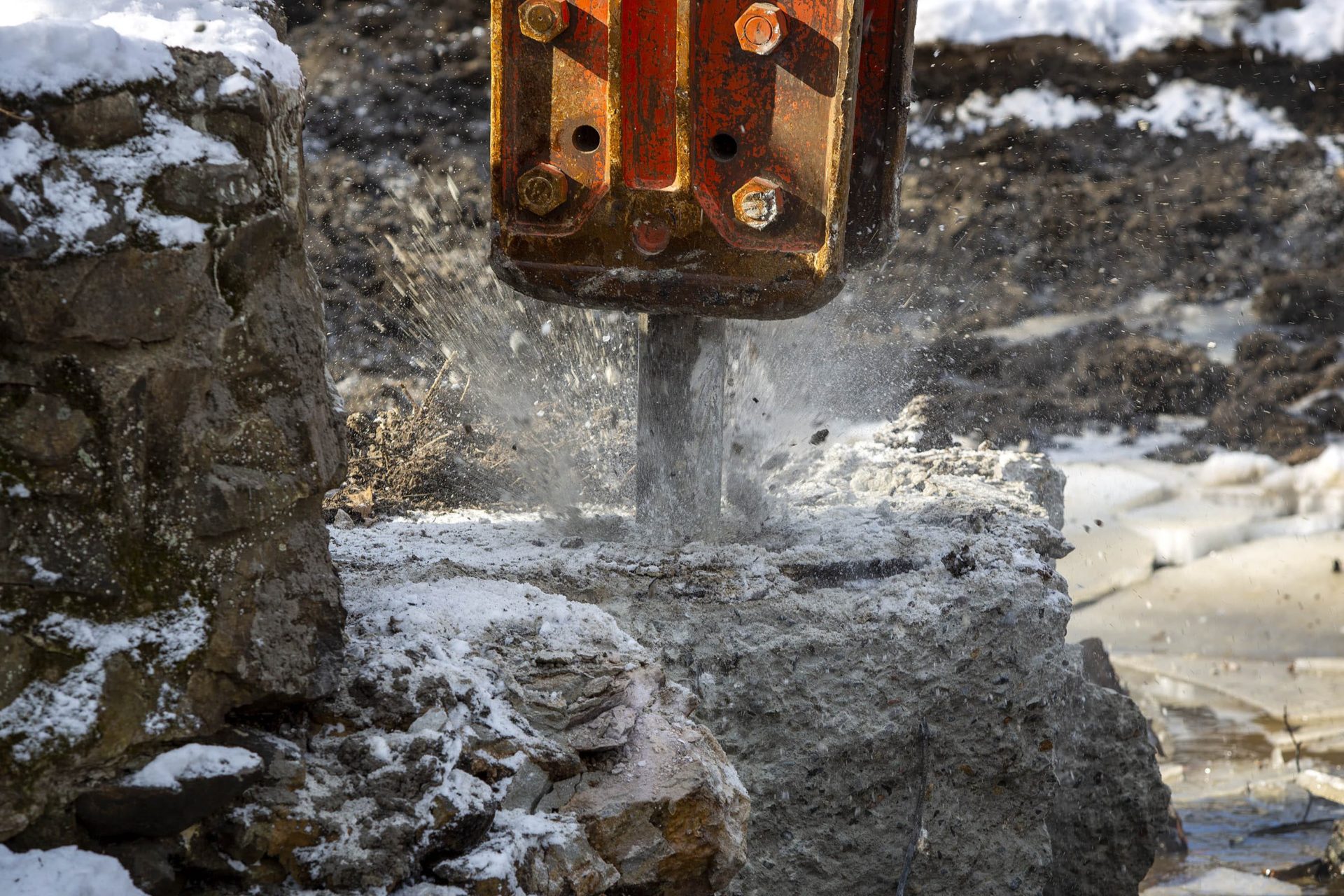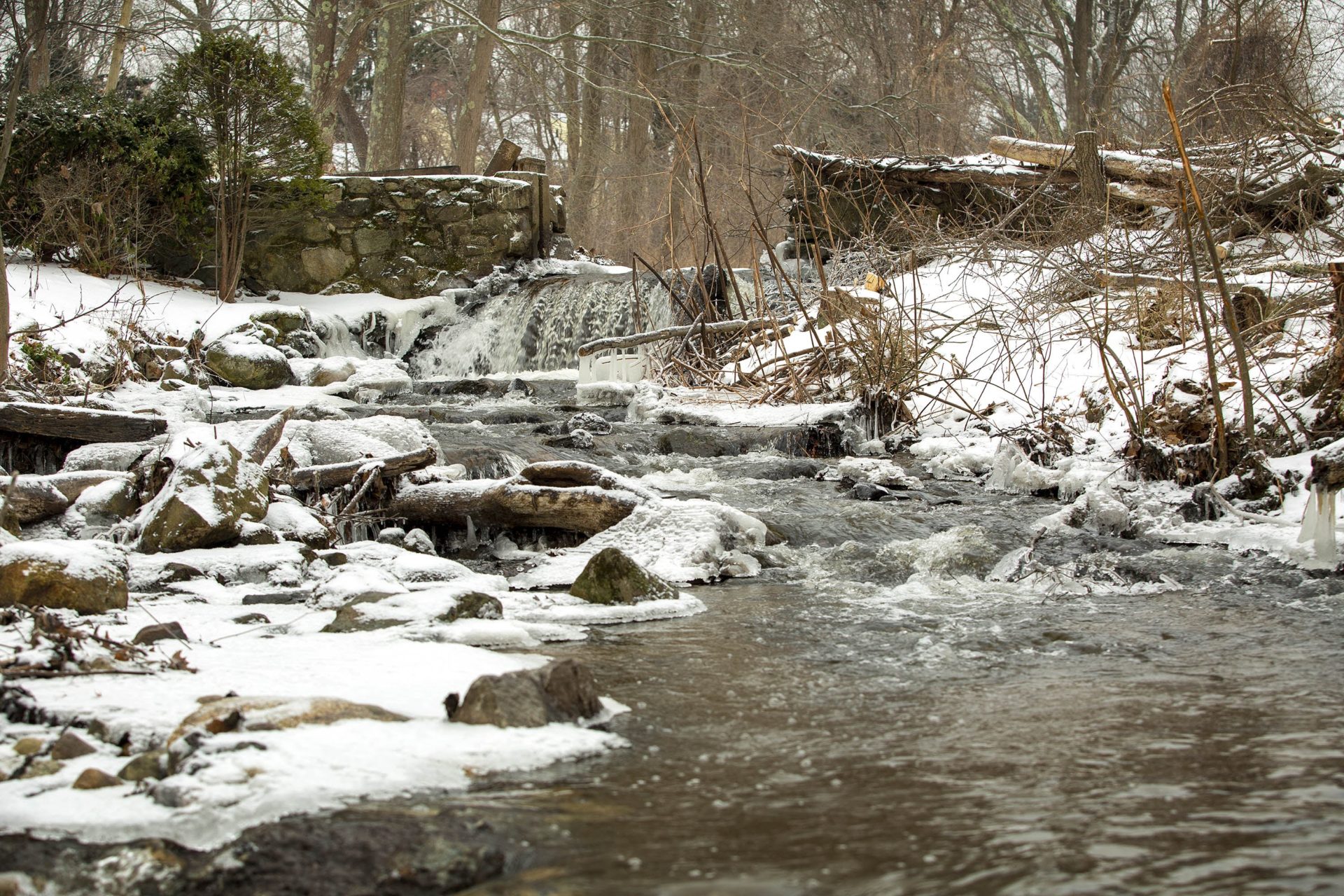Many dams in Massachusetts are hazards. But demolishing them is no small feat

Traphole Brook, flowing away from the camera and across the dam at the right side of the picture. The demolition team dug the smaller channel that runs to the left and through the berm beyond the construction equipment. The team will divert the brook along this channel before they remove the dam. (Robin Lubbock/WBUR)
A massive yellow Cat excavator pounded away at a 200-year-old dam in Norwood, Mass., on a recent morning.
“The sound of the hydraulic hammer, to me, is one of the best sounds in the world,” said Beth Lambert, head of the Massachusetts Division of Ecological Restoration. “When you hear that hammer, you know that another dam is coming down, and the river will recover its health.”
The old stone masonry crumbled away easily, falling into the riverbed of Traphole Brook below.
There are over 3,000 dams in Massachusetts. The state says only few of them still serve their original purpose, and many are in disrepair. A growing movement of environmentalists, fishermen and community groups are pushing to remove them in order to restore the health of the rivers they block.

A jackhammer breaks up the spillway of the Mill Pond Dam on Traphole Brook. (Robin Lubbock/WBUR)
Advocates pushed for years to destroy this old mill dam on Traphole Brook.
The stream is home to the largest number of native brook trout in this part of the state. But the dam has severed their population in two.
“We have trout upstream of the dam, trout downstream of the dam, that are sort of like families that have been isolated in different countries that can’t cross the border for years,” said Ian Cooke, executive director of the Neponset River Watershed Association.
Cooke and his organization were key in rallying community support to remove the dam, which cost about $2 million.
“So many things had to go right, and so many people had to be excited about this to get us to this day,” he said. “It’s really wonderful to just see it finally come to fruition.”
These dams often look unassuming, even bucolic. But experts say they have significant environmental impacts.
“One of the things that dams like this, especially small dams, cause is artificial warming of the water,” said Chris Hirsch, the state’s project manager for the Norwood dam removal. “And trout and other cold water animals require very cold, highly oxygenated water.”

Water flowing through the spillway of the Mill Pond Dam on Traphole Brook in the week before its removal. (Robin Lubbock/WBUR)
“Cold water streams used to be very common in the greater Boston area,” he added. “But unfortunately, because of development, damming and climate change, they’re becoming increasingly rare. This is one of the last remaining really good examples with really robust populations of trout.”
Neglected dams can also pose flooding risks. In 2005, downtown Taunton was ordered to evacuate after an earthen dam upstream buckled during a heavy rainstorm. Fortunately the dam held, and was safely removed.
A database compiled by the state lists 745 significant-hazard and 330 high-hazard dams in Massachusetts. “Significant” means they could cause serious damage to property or the environment if they broke; “high” means a break could be fatal. And experts warn that number could grow as climate change leads to more intense rain and flooding.
A recent climate resiliency study of the Mystic River found the Amelia Earhart Dam between Somerville and Everett would be vulnerable to significant damage in a historic Nor’easter, threatening to flood parts of both communities, the MBTA Orange Line, and areas of Malden and Medford.
The Norwood dam was considered low-hazard, but still caused concern — “the upstream road, downstream houses, sensitive eastern brook trout,” Lambert said. The dam backed up water above a dense residential neighborhood.
“Now just multiply that by 3,000 across the commonwealth, and you can see what a cumulative impact these dams have on public safety and the environment,” she said.
Most of those 3,000 dams were built in the 1700s and 1800s to power small mills. Today, some are owned by the state, some by cities and towns, and some by private owners.
Read the rest of this story and hear the audio version at WBUR.org.
